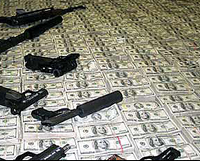The war looks eerily familiar: beheadings, assassinations of police and public officials, terrorized businesspeople, extorted schoolteachers, and in five years more than 230 American civilians dead in the crossfire. All this could easily describe the battle in Afghanistan or Pakistan, but the reality is closer to home, where an increasingly gruesome and threatening war is threatening to boil over the United States' southern border with Mexico. Summing up decades of policy, three former Latin American heads of state last week declared, "The war on drugs has failed." Fernando Henrique Cardoso of Brazil, César Gaviria of Colombia and Ernesto Zedillo of Mexico, working together on the Latin American Commission on Drugs and Democracy, argued, "Prohibitionist policies based on eradication, interdiction and criminalization of consumption simply haven't worked. . . . Today, we are further than ever from the goal of eradicating drugs." Considering the money and resources committed to the War on Drugs over the years, the claim is mind-boggling. Pinning down exact figures is difficult, but some experts estimate that nearly $1 trillion has been spent in total. In 2009, $14 billion more has been budgeted to programs spanning 12 agencies of the U.s. federal government, from the Small Business Administration and Veterans Affairs to State, Interior and the Department of Defense. Every one of them, according to the Office of National Drug Control Policy, is an "important partner." Some experts say that the actual money spent this year will be twice as much.
Under the Influence: Demand and the Mexican Drug War

